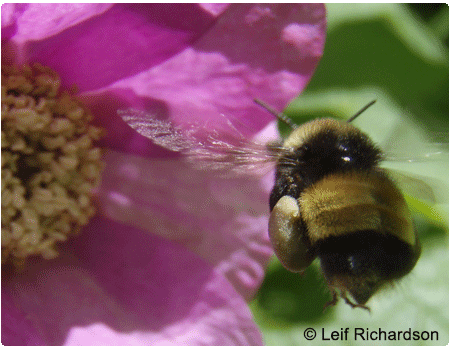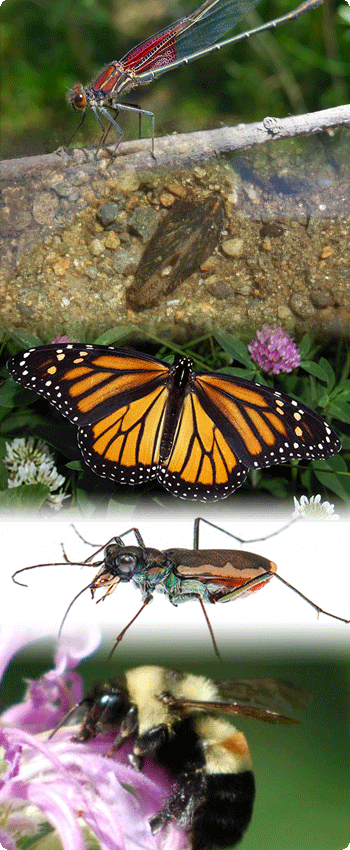The vast majority of Vermont’s animals are invertebrates—animals without backbones. The Vermont Natural Heritage Inventory tracks site-specific information on 221 rare or uncommon invertebrate species.
 Invertebrates include a wide variety of animals. In Vermont, better-known invertebrate groups include:
Invertebrates include a wide variety of animals. In Vermont, better-known invertebrate groups include:
- arthropods (insects, spiders, crustaceans, and their kin)
- mollusks
- sponges
- various types of worms
While precisely how many kinds of invertebrates are in Vermont is unknown, it has been estimated at approximately 21,400 species.
The department’s zoologist conducts surveys and works with partners—professional and amateur naturalists alike—to better understand the invertebrates of Vermont.
In Vermont, distribution data and, to varying extents, life history and conservation needs have been fairly well-documented for:
- odonates (dragonflies and damselflies),
- freshwater mussels | PDF
- butterflies | PDF
- tiger beetles
- bumble bees | PDF
Additional Resources
Vermont Atlas of Life – A biodiversity warehouse where students can learn, citizen naturalists and professional biologists can contribute new information, and conservationists can use the latest information to help protect and manage Vermont’s natural heritage.
Butterfly Survey – From 2002 to 2007, volunteers searched throughout the state to survey Vermont’s butterflies.
Vermont Bumble Bee Survey – From 2012 to 2014, Vermont Center for Ecostudies biologists and citizen scientists spread across the state to survey bumble bees, and the similar appearing, Eastern Carpenter Bee. Nearly half of these bees are of conservation concern.
Dragonfly and Damselfly Atlas – Field work for this atlas began in the late 1990s and sheds light on the diversity and distribution of odonates in Vermont's.
The Odonata of Vermont – This 56-page report by Michael Blust and Brian Pfeiffer documents the distribution (with maps), conservation status, and flight periods of Vermont’s 99 dragonfly species and 43 damselfly species.
Tiger Beetle Atlas – Vermont has 17 species of tiger beetles and more than half of them are of conservation concern. This atlas represents years of field work by many contributors with new records added each year.
Vermont Freshwater Mussel Atlas – Vermont has 18 native species and the majority are of conservation concern. This atlas provides information about freshwater mussel biogeography for conservation, science, and society.
iNaturalist Vermont – Join the growing community of citizen naturalists from around Vermont in discovering and sharing observations of Vermont life. Your observations can be turned into research-grade, citizen science data that will help discover, track and conserve Vermont’s natural heritage.
e-Butterfly – A real-time, online checklist and photo storage program providing a new way for the butterfly community to report, organize and access information about butterflies in North America.
Odonata Central – This site makes available what is known about the distribution, biogeography, biodiversity, and identification of dragonflies and damselflies in the Western Hemisphere.
See also:
- Pollinators in Peril
- Lists of Animal Species Found in Vermont
- List of Endangered and Threatened Animals of Vermont | PDF
- List of Rare and Uncommon Animals in Vermont | PDF
- Recovery Plans for Threatened & Endangered Species
- Wildlife Action Plan
- Endangered and Threatened Species Takings Permits
- Citizen Reporting Forms
- NatureServe Explorer
